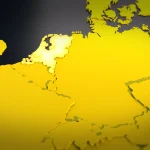“I don’t think there’s anything more important in my lifetime to work on, and I don’t think there’s anything more enabling for people around the world,” he told the audience at a Bitcoin conference in Miami in June.
Mr. Dorsey, whose oracular beard and quirky wellness routines have made him something of a cult figure in Silicon Valley, has become a crypto influencer in recent months. Bitcoin fans cheered his resignation on Monday, assuming he’d be spending his newfound free time championing their cause. (A more likely scenario is that he’ll continue to push crypto projects at Square, where he’s already started building a decentralized finance business.)
Mr. Dorsey didn’t respond to a request for comment, so I can’t be totally sure what’s behind his exit, but it’s easy to see why he would be getting restless at Twitter after more than 15 years of involvement. He cut his teeth during the internet boom of the late 2000s and early 2010s, when being a co-founder of a hot social media app was a pretty great gig. You got invited to fancy conferences, investors showered you with money and the media heralded you as a disruptive innovator. If you were lucky, you even got invited to the White House to hang out with President Obama. Social media was changing the world — Kony 2012! The Arab Spring! — and as long as your usage numbers kept moving in the right direction, life was good.
Today, running a giant social media company is — by the looks of it — pretty miserable. Sure, you’re rich and famous, but you spend your days managing a bloated bureaucracy and getting blamed for the downfall of society. Instead of disrupting and innovating, you sit in boring meetings and fly to Washington so politicians can yell at you. The cool kids no longer want to work for you — they’re busy flipping NFTs and building DeFi apps in web3 — and regulators are breathing down your neck.
In many ways, today’s crypto scene has inherited the loose, freewheeling spirit of the early social media companies. Crypto start-ups are raising tons of money, attracting huge amounts of hype and setting off on utopian-sounding missions of changing the world. The crypto universe is full of weird geniuses with unusual pedigrees and big appetites for risk, and web3 — a vision for a decentralized internet built around blockchains — contains lots of the kinds of complex technical problems that engineers love to solve. Those factors, plus the enormous sums of money flowing into crypto, have made it a tempting landing spot for burned-out tech employees looking to get back in touch with their youthful optimism — and maybe for C.E.O.s, too.
“Silicon Valley tech is the old guard, distributed crypto is the frontier,” Naval Ravikant, another crypto booster and an early Twitter investor, tweeted this month.
Square, which builds mobile payment systems, has always been the most natural outlet for Mr. Dorsey’s crypto dreams. But he has tried to incorporate some of Bitcoin’s principles into Twitter. The company added Bitcoin tipping and started a decentralization project called Bluesky last year, with the goal of creating an open protocol that would allow outside developers to build Twitter-like social networks with different rules and features than the main Twitter app. (Mr. Agrawal, who is taking over for Mr. Dorsey at Twitter, has been closely involved with these initiatives, meaning they probably won’t disappear when Mr. Dorsey does.)














